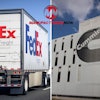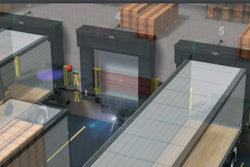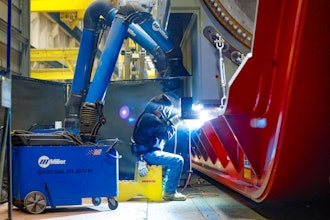There’s a Keystone in every great invention.
The holidays are a beloved time of gift giving, cheer, and celebration, with family and friends traveling across the country to spend cherished time with loved ones.
However, many of us forget to think about protecting these gifts—and our houses—during the holiday season. How do we juggle visiting family while making sure our belongings are secure? One excellent way is to install burglar alarms.
Since the 1850s, Americans have been protecting their homes with automated security systems. These devices detect intruders when they enter a household, silently alerting the authorities when break-ins occur.
But how did these systems become modern, sophisticated solutions? Below is an evolutionary history of burglar alarms and some tips on how to get the most out of your device this holiday season.
Burglary Prevention in the Parsonage
Reverend Augustus Russell Pope developed the first security alarm in October 1850 for his home in Somerville, Massachusetts. His remarkably simple electromagnetic system comprised of switches and magnets that attached to door and window openings. It operated via batteries and electric current with concealed wires that linked to a bell located in Pope’s bedroom. When intruders triggered the system, the bell would ring, allowing him to quickly respond.
After patenting the alarm in 1853, Pope fell ill with typhoid and sold the patent to Edwin Holmes for $9,800. Holmes made changes to the system to enhance customers’ ability to pinpoint the location of the break-in. He also created a centralized alarm network with employees who monitored alerts and notified authorities. By 1877, Holmes’s alarm network had more than 1,000 subscribers.
For the next 30 years, the Holmes Burglar Alarm Company enjoyed a monopoly on home security systems. However, in 1880, W.R. Alling established his Metropolitan Burglar-Alarm Company to compete with Holmes’s business. Their competition improved the prices of the alarm services, causing monthly fees to drop from $15–30/month to $10/month.
Burglar Alarms Today
Burglar alarm systems are considerably more sophisticated than they were in the 1800s. They offer a wide variety of alarm types, with purposes ranging from focused burglary protection to ultrasonic movement detection.
Typically, a modern burglar alarm system has:
A control panel that reads input from a sensor, arms and disarms the system, and signals intrusions. This panel usually has a computer circuit board enclosed with its own power supply.
Sensors that protect the area by monitoring doors and windows for potential break-ins and monitoring unoccupied interiors for vibration, sound, or motion.
Alerting devices that warn occupants and bystanders of intruders and scare burglars off. These include bells, sirens, and flashing lights.
Keypads used to operate the system.
Wiring or wireless links that connect various components.
Security systems appear across many commercial and domestic establishments. Some also incorporate features, such as lasers, automated timers, and cloud computing, to effectively monitor threats. Even the most lavishly holiday-decorated homes can avoid break-ins with the successful installation of quality security systems.
Modern Components Make the Difference
Burglar alarm systems have evolved exponentially since Pope sold his original patent to Holmes more than two centuries ago. Today, precision electronic components and cloud integration build on Pope’s simple design to give alarm owners maximum peace of mind.
Keystone Electronics offers a full range of state-of-the-art electronic products including components designed for burglar alarm systems, such as battery products and hardware, a wide scope of fuse hardware, and LED hardware that includes spacers and lens caps.
We design many of our products specifically for engineers and OEMs as well as everyday consumers. While we tailor them to meet standard requirements, we also consult with clients to craft custom-made solutions.
In addition to our design and engineering services and precision tool and die capabilities, Keystone provides close tolerance machining, stamping, and assembly. Our computer-based quality-control systems ensure top-notch delivery to your doorstep or facility, and our customer service representatives are available if you run into any issues.
If you’re looking to give the gift of greater security this holiday season, contact us and request a free quote today.
Guard Your Goods: The Development of Burglar Alarms
Since the 1850s, Americans have been protecting their homes with automated security systems. These devices detect intruders when they enter a household, silently alerting the authorities when break-ins occur. But how did these systems become modern, sophisticated solutions? Below is an evolutionary history of burglar alarms and some tips on how to get the most out of your device this holiday season.
Latest in Home



















